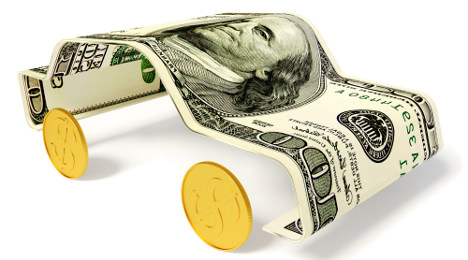Webb’s theory why November wholesale prices dipped 1%

Cox Automotive chief economist Tom Webb shared his theory as to why wholesale used-vehicle prices (on a mix-, mileage-, and seasonally adjusted basis) declined 1 percent in November.
Webb explained that what brought the Manheim Used Vehicle Value Index to a reading of 124.7 for November — a decrease of 0.3 percent from a year ago — might not have stemmed from what he and other industry watchers have observed for much of 2016.
“Although the growing wholesale supply of used vehicles has been the most discussed story of the year (and rightly so), the weakness in November wholesale pricing was probably more related to new-vehicle market activity — channel stuffing and higher incentives,” Webb said. “To compete, the used-vehicle market needed to adjust prices quickly as inventory turn remains paramount.
“If our theory for the price movement is correct, manufacturers may have more control over future residuals than currently believed,” Webb continued. “They will, however, need to better balance new vehicle volume objectives with already assumed end-of-term residual projections.”
Among the vehicle segments Manheim tracks for its index update, prices for the two car segments that have been sagging for much of the year dropped again in November. Prices for midsize cars dipped by 1.8 percent while prices for compact cars sunk by more than trip that amount (6.0 percent).
“Every time used compact and midsize cars seem to find a bottom in wholesale pricing, it proves to be a false bottom,” Webb said. “Such was the case in November as these two segments continued to lead the overall market downward.”
Meanwhile, prices for luxury cars ticked up 1.0 percent joining prices for vans and pickups, which also moved higher by 3.2 percent and 3.8 percent respectively. Manheim noticed prices for SUVs and CUVs softened by just 0.8 percent in November.
Adding a little bit more color to the wholesale pricing movements, Webb said, “An analysis of changes in average mileage by price tier suggests that the weakness in wholesale pricing has moved down the price scale. In November, the softness was most pronounced in the $6,000 to $8,000 price range.”
Webb also mentioned that rental risk prices continue to ease.
In November, Manheim indicated auction prices for rental risk units sold at auction (adjusted for broad shifts in market class and mileage) declined 0.6 percent from October and 4 percent from a year ago. However, on an unadjusted basis, the index report pointed out prices rose to a new high.
“Auction volume was significantly higher in November as rental companies were able to off-load units no longer needed in the loaner car or insurance replacement segment,” Webb said. “The average mileage on rental risk units sold in November was 16 percent lower than a year ago.”
Retail markets
As he often does, Webb touched on November sales results in both the new and used spaces.
As was reported previously by Auto Remarketing, Webb highlighted that certified pre-owned sales jumped 10 percent in November after two months of year-over-year declines. Full-year CPO sales are now set for a record of more than 2.6 million units.
“Although total used-vehicle sales for franchised and independent dealers have yet to be released for November, channel checks indicate that they increased again during the month,” Webb said. “The availability of retail financing remains supportive of the used-vehicle market.”
On the new-model side, Webb recapped that new car and light duty trucks sold at a seasonally adjusted annual selling rate (SAAR) of 17.8 million in November. He said that result came “at a cost.”
Webb said, “A richer mix (i.e., more trucks and crossovers) boosted average transaction prices, but the incentive spend grew much faster. And despite the strong sales, dealers ended the month with higher-than-desired inventory levels. As such, the marketing push will likely continue in the short term.”

 View The Latest Edition
View The Latest Edition

